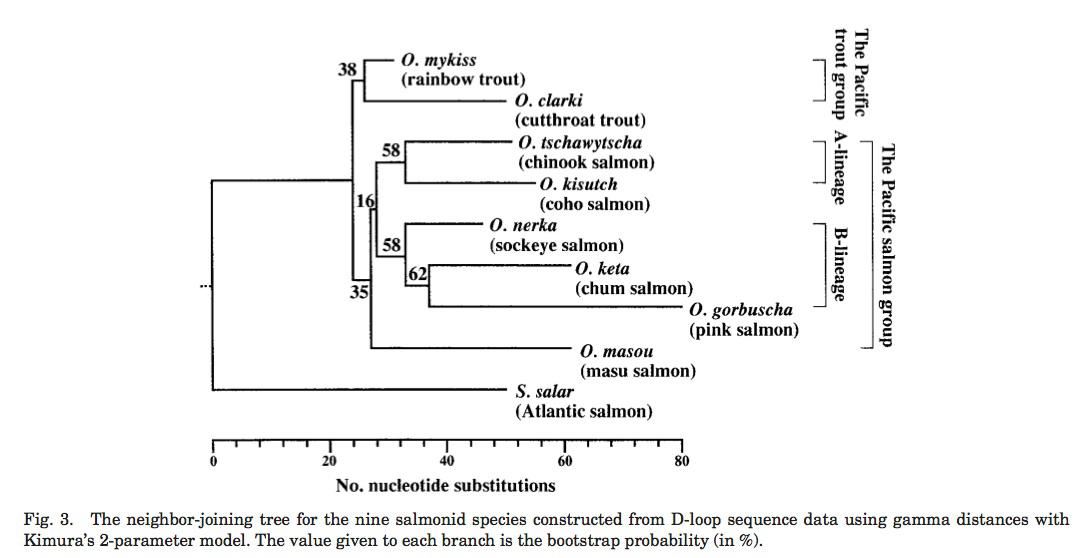MIGRATORY PATTERNS OF CHINOOK SALMON
Biology 342 Fall 2012
Tess Tumarkin & Erin McAllester
Phylogeny
As described in the Tinbergen diagram on the home page, phylogeny asks: How does the behavior compare to related species, what is the history of the behavior over evolutionary time, why did it develop the way it did.

The amount of radiation (branching) of Pacific salmon contrasts dramatically with the Atlantic salmon in the phylogenetic tree pictured above (Kitano, et al).
How migration (navigational ability) affected the evolution of the species
A study performed by Montgomery suggests that the divergence of Pacific salmon species correspond to activity of tectonic plates around the Pacific. This activity gave rise to major topographic shifts that created splits in costal rivers that could have created geographic barriers between different salmon populations. Although migration would have allowed for genetic drift between separate tributary populations, it is suggested that the various populations remained genetically isolated due to the precision of salmon homing ability (Montgomery).
Similarities and differences in migration between species
In terms of migration along a freshwater spawning ground, different species of salmon tend to spawn in different areas: Pink and Chum spawn lower reaches in a watershed, Sockeye salmon spawn in lakes, Coho in smaller tributaries, and Chinook in the main stem and larger tributaries. Although they spawn in different areas, all of these species have in common a fresh to saltwater (and reverse) migration pattern (Montgomery). Although the behavior differs slightly, in the most related (and also in more distantly related) species of salmon, the migratory behavior persists.
Intraspecific phylogeny, how migration evolves in different populations of Chinook Salmon
A different approach to phylogeny is an intraspecies versus an interspecific comparison. Differences in the morphology of the behavior of migration exist within Chinook salmon: whether they are spring-run or fall-run types, which refers to the season in which they migrate back to their natal streams. According to a study focusing on Chinook salmon in California’s Central Valley, run timing (or migratory behavior) is more phylogenetically relevant in that spring-run populations from different regions are more closely related than salmon populations from the same basin (Garza, et al.)